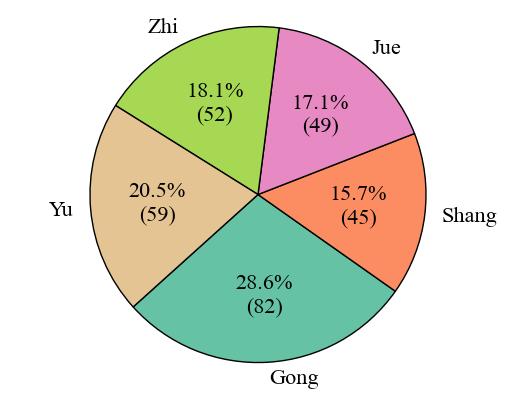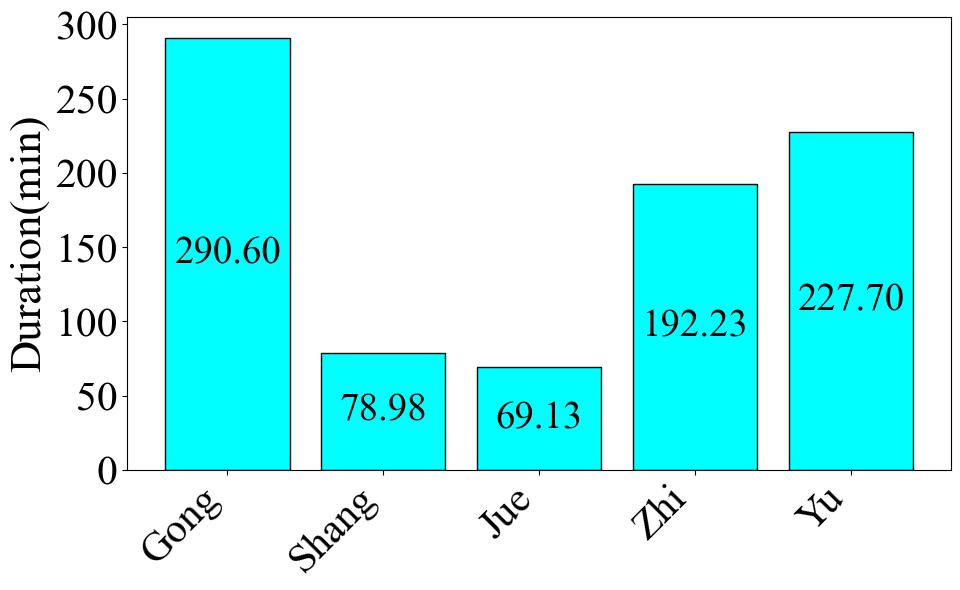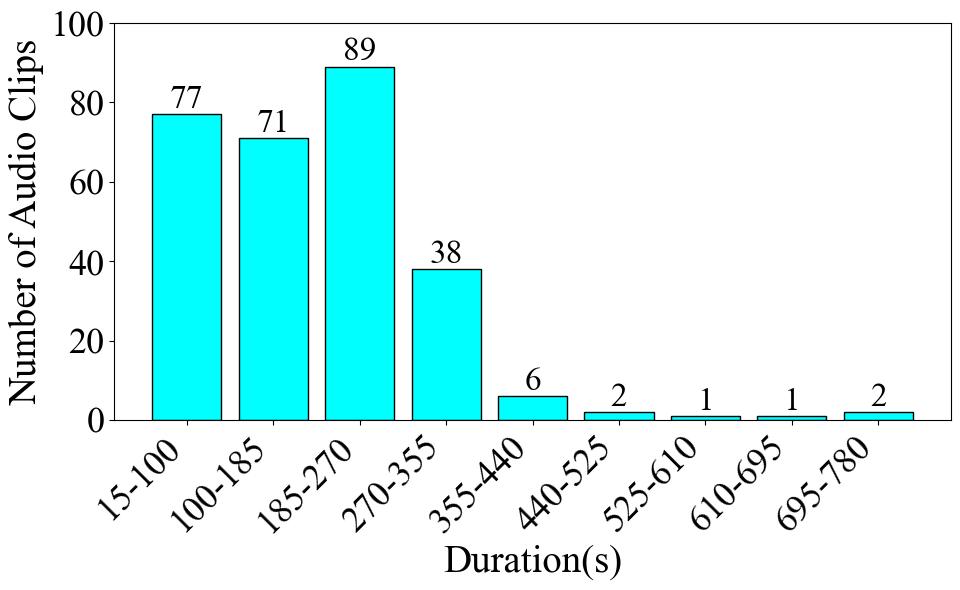Datasets:
extra_gated_prompt: >-
The CNPM dataset contains links to web audios used for data collection
purposes. CNPM does not own or claim rights to the content linked within this
dataset; all rights and copyright remain with the respective content creators
and channel owners. Users are responsible for ensuring compliance with the
terms and conditions of the platforms hosting these audios.
extra_gated_fields:
I acknowledge that CNPM does not own the audios linked in this dataset: checkbox
I acknowledge that CNPM is not the original creator of the audios in this dataset: checkbox
I understand that CNPM may modify or remove dataset content at the request of content creators or in accordance with platform policies: checkbox
I accept the dataset license terms (CC-BY-NC-ND-4): checkbox
I agree to use this dataset for non-commercial use ONLY: checkbox
license: cc-by-nc-nd-4.0
task_categories:
- audio-classification
language:
- zh
- en
tags:
- music
- art
pretty_name: Chinese National Pentatonic Mode Dataset
size_categories:
- n<1K
dataset_info:
- config_name: default
features:
- name: audio
dtype:
audio:
sampling_rate: 44100
- name: mel
dtype: image
- name: system
dtype:
class_label:
names:
'0': C
'1': '#C/bD'
'2': D
'3': '#D/bE'
'4': E
'5': F
'6': '#F/bG'
'7': G
'8': '#G/bA'
'9': A
'10': '#A/bB'
'11': B
- name: tonic
dtype:
class_label:
names:
'0': C
'1': '#C/bD'
'2': D
'3': '#D/bE'
'4': E
'5': F
'6': '#F/bG'
'7': G
'8': '#G/bA'
'9': A
'10': '#A/bB'
'11': B
- name: pattern
dtype:
class_label:
names:
'0': Gong
'1': Shang
'2': Jue
'3': Zhi
'4': Yu
- name: type
dtype:
class_label:
names:
'0': Pentatonic
'1': Hexatonic_Qingjue
'2': Hexatonic_Biangong
'3': Heptatonic_Yayue
'4': Heptatonic_Qingyue
'5': Heptatonic_Yanyue
- name: mode
dtype: string
splits:
- name: train
num_bytes: 116273
num_examples: 287
download_size: 2876503790
dataset_size: 116273
- config_name: eval
features:
- name: mel
dtype: image
- name: cqt
dtype: image
- name: chroma
dtype: image
- name: label
dtype:
class_label:
names:
'0': Gong
'1': Shang
'2': Jue
'3': Zhi
'4': Yu
splits:
- name: train
num_bytes: 1294328
num_examples: 2182
- name: validation
num_bytes: 161246
num_examples: 271
- name: test
num_bytes: 161378
num_examples: 271
download_size: 328570384
dataset_size: 1616952
configs:
- config_name: default
data_files:
- split: train
path: default/train/data-*.arrow
- config_name: eval
data_files:
- split: train
path: eval/train/data-*.arrow
- split: validation
path: eval/validation/data-*.arrow
- split: test
path: eval/test/data-*.arrow
Dataset Card for Chinese National Pentatonic Mode Dataset
Original Content
The dataset is initially created by [1]. It is then expanded and used for automatic Chinese national pentatonic mode recognition by [2], to which readers can refer for more details along with a brief introduction to the modern theory of Chinese pentatonic mode. This includes the definition of "system", "tonic", "pattern", and "type," which will be included in one unified table during our integration process as described below. The original dataset includes audio recordings and annotations of five modes of Chinese music, encompassing the Gong (宫), Shang (商), Jue (角), Zhi (徵), and Yu (羽) modes. The total recording number is 287.
Integration
The labels in this dataset were initially stored in a separate CSV file, which led to certain usability issues. Through our integration, labels are integrated with audio data into a single dictionary. After the integration, the data structure consists of seven columns: the first and second columns denote the audio recording (sampled at 44,100 Hz) and mel spectrogram. The subsequent columns represent the system, tonic, pattern, and type of the musical piece, respectively. The final column contains an additional Chinese name of the mode. The total recording number remains at 287, and the total duration is 858.63 minutes. The average duration is 179.51 seconds.
We have constructed the default subset of this integrated version of the dataset, and its data structure can be viewed in the viewer. As this dataset has been cited and used in published articles, no further eval subset needs to be constructed for evaluation. Because the default subset is multi-labelled, it is difficult to maintain the integrity of labels in the split for all label columns, hence only a single split for the training set is provided. Users can perform their own splits on specified columns according to their specific downstream tasks. Building on the default subset, we segmented the audio into 20-second slices and used zero padding to complete segments shorter than 20 seconds. The audio was then converted into mel, CQT, and chroma spectrograms. This process resulted in the construction of the eval subset for dataset evaluation experiments.
Statistics
In this part, we provide statistics for the "pattern" in the dataset, which includes five categories: Gong, Shang, Jue, Zhi, and Yu. Our evaluation is also conducted on "pattern." In a Western context, identifying these patterns is analogous to identifying a musical mode, such as determining whether a piece of music is in the Dorian mode or Lydian mode. These patterns form the core of modern Chinese pentatonic mode theory.
To begin with, Fig. 1 presents the number of audio clips by category. Gong accounts for the largest proportion among all modes, making up 28.6% of the dataset with 82 audio clips. The second-largest mode is Yu, accounting for 20.6% with 59 audio clips. The smallest mode is Shang, which accounts for 15.7% with only 45 audio clips. The difference in proportion between the largest and smallest modes is 12.9%.
Moving on to Fig. 2, it displays the total audio duration by category. The total duration of Gong audio is significantly longer than that of other modes, at 290.6 minutes. The second-longest mode is Yu, with a total duration of 227.7 minutes, consistent with the proportions shown in the pie chart. However, the shortest mode is not Shang, which has the smallest proportion in the pie chart, but rather Jue, with a total duration of only 69.13 minutes. The difference in duration between the longest and shortest modes is 221.47 minutes.
When we consider the pie chart and the duration statistics together, they clearly expose a data imbalance problem within the dataset. Finally, Fig. 3 depicts the number of audio clips across various duration intervals. The time interval with the highest concentration of audio clips is 185-270 seconds, closely followed by 15-100 seconds. However, once we go beyond 355 seconds, the number of audio clips experiences a sharp decline, with only single-digit counts in these longer intervals.
| Statistical items | Values |
|---|---|
| Total count | 287 |
| Total duration(s) | 51517.97027494332 |
| Mean duration(s) | 179.50512290921014 |
| Min duration(s) | 15.413333333333334 |
| Max duration(s) | 778.0065306122449 |
| Classes with max durs | Jue, Zhi |
Default Subset Structure
Data Instances
.zip(.wav), .csv
Data Fields
Audio Links, Mel Image, Tonggong System, Mode Tonic/Pattern/Type, Mode Chinese Name
Data Splits
train / validation / test
Labels
System
| TongGong System | C | #C/bD | D | #D/bE | E | F | #F/bG | G | #G/bA | A | #A/bB | B |
|---|---|---|---|---|---|---|---|---|---|---|---|---|
| Label | 0 | 1 | 2 | 3 | 4 | 5 | 6 | 7 | 8 | 9 | 10 | 11 |
Mode
Pitch of Tonic (The rules are the same as the TongGong system)
Pattern
| Mode Pattern | Gong | Shang | Jue | Zhi | Yu |
|---|---|---|---|---|---|
| Label | 0 | 1 | 2 | 3 | 4 |
Type
| Mode Type | Pentatonic | Hexatonic (Qingjue) | Hexatonic (Biangong) | Heptatonic Yayue | Heptatonic Qingyue | Heptatonic Yanyue |
|---|---|---|---|---|---|---|
| Label | 0 | 1 | 2 | 3 | 4 | 5 |
Dataset Description
Dataset Summary
Each data entry of the dataset consists of seven columns: the first column denotes the audio recording in .wav format, sampled at 22,050 Hz. The second and third presents the name of the piece and artist. The subsequent columns represent the system, tonic, pattern, and type of the musical piece, respectively. The eighth column contains an additional Chinese name of the mode, while the final column indicates the duration of the audio in seconds.
Supported Tasks and Leaderboards
MIR, audio classification, music mode classification
Languages
Chinese, English
Usage
Default Subset
from datasets import load_dataset
ds = load_dataset(
"ccmusic-database/CNPM",
name="default",
split="train",
token="Your_Access_Token",
)
for data in ds:
print(data)
Eval Subset
from datasets import load_dataset
ds = load_dataset("ccmusic-database/CNPM", name="eval", token="Your_Access_Token")
for item in ds["train"]:
print(item)
for item in ds["validation"]:
print(item)
for item in ds["test"]:
print(item)
Maintenance
GIT_LFS_SKIP_SMUDGE=1 git clone [email protected]:datasets/ccmusic-database/CNPM
cd CNPM
Mirror
https://www.modelscope.cn/datasets/ccmusic-database/CNPM
Additional Information
Dataset Curators
Weixin Ren, Mingjin Che, Zhaowen Wang, Qinyu Li, Jiaye Hu, Fan Xia, Wei Li.
Evaluation
[1] Wang, Z., Che, M., Yang, Y., Meng, W., Li, Q., Xia, F., and Li, W. (2022b). Automatic chinese national pentatonic modes recognition using convolutional neural network. In Proc. Int. Society Music Information Retrieval (ISMIR).
[2] Ren, W., Che, M., Wang, Z., Meng, W., Li, Q., Hu, J., Xia, F., and Li, W. (2022). Cnpm database: A chinese national pentatonic modulation database for computational musicology. Journal of Fudan University(Natural Science), 61(5):9.
[3] https://huggingface.co/ccmusic-database/CNPM
Citation Information
@inproceedings{WangCYMLX022,
author = {Zhaowen Wang and Mingjin Che and Yue Yang and Wenwu Meng and Qinyu Li and Fan Xia and Wei Li},
title = {Automatic Chinese National Pentatonic Modes Recognition Using Convolutional Neural Network},
booktitle = {Proceedings of the 23rd International Society for Music Information Retrieval Conference, {ISMIR} 2022, Bengaluru, India, December 4-8, 2022},
pages = {345-352},
year = {2022}
}
Contributions
Provide a dataset for the modern Chinese National Pentatonic Mode


